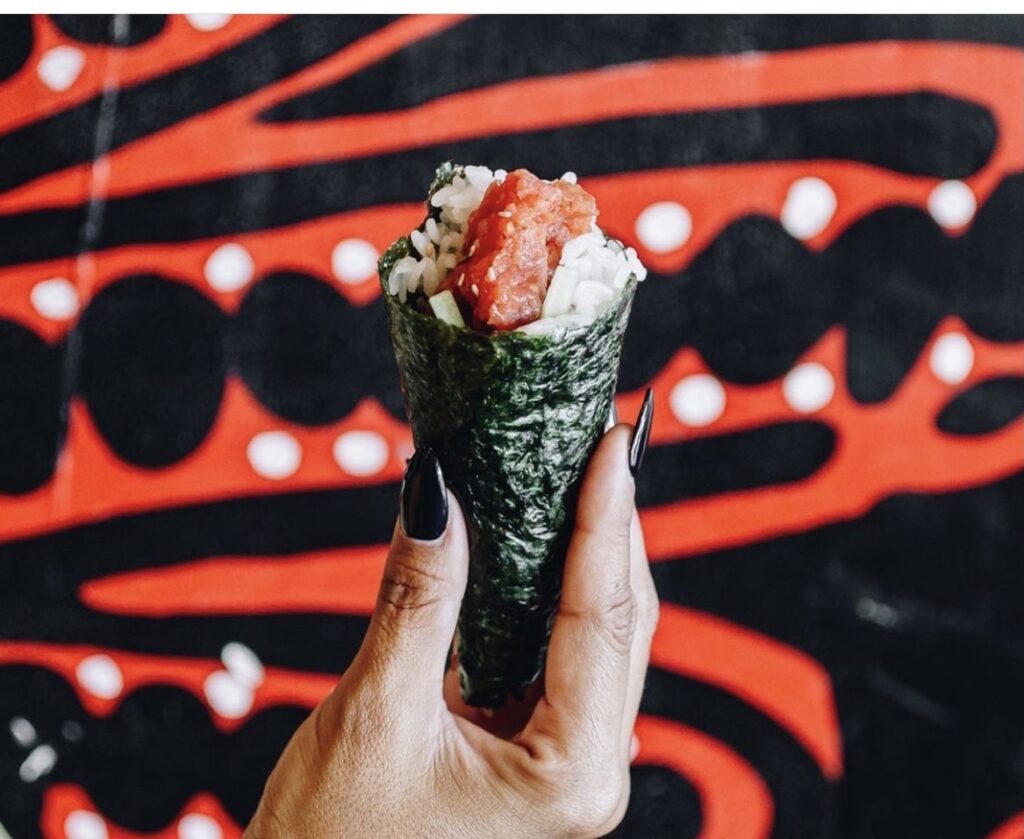One restaurant changed everything.
Chef Anthony Pascale, owner of Saiko Sushi located at 116 Orange Avenue, was traveling through Japan and he was hungry. But he wasn’t in the mood for Japanese food. He was craving Italian. Sure enough, he found a restaurant and settled in to eat. His experience changed the way he looked at food, prepared his dishes and ran his entire restaurant.
“They did everything differently,” says Pascale. “They soaked their pasta in soy sauce, and twirled the noodles around the chopsticks. It was actually delicious, just…different.”
That’s when he realized how some Japanese sushi chefs and diners must feel when they come to eat sushi in the U.S. He returned to home to Saiko Sushi (only a year old at the time) and threw all the menus in the trash. He took away all the Japanese wording and phrases and established a new ideal: he would only use local fish, produce from area farms and ingredients grown in the region, whenever possible.
“What would sushi look like if these Japanese sushi chefs grew up in San Diego, instead of Japan?” he asked.
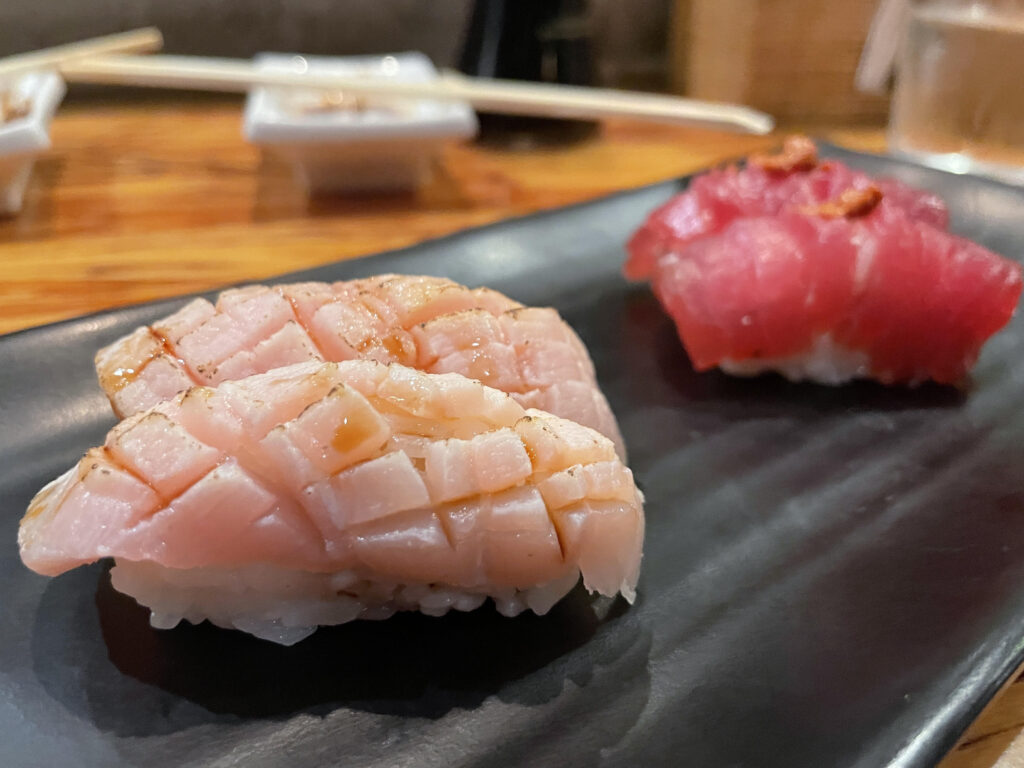
That’s the idea behind Saiko Sushi, a fresh idea with enough fight to withstand a global pandemic, lure in the locals and empower San Diego fishermen.
Pascale, whose restaurant celebrated its tenth year of business in July, starts almost every day with a visit to either Driscoll’s Wharf or the Embarcadero, where he buys fresh fish right off the boats. He often buys from local fisherman Pete Grillo, who runs Atlantic Pacific Tuna.
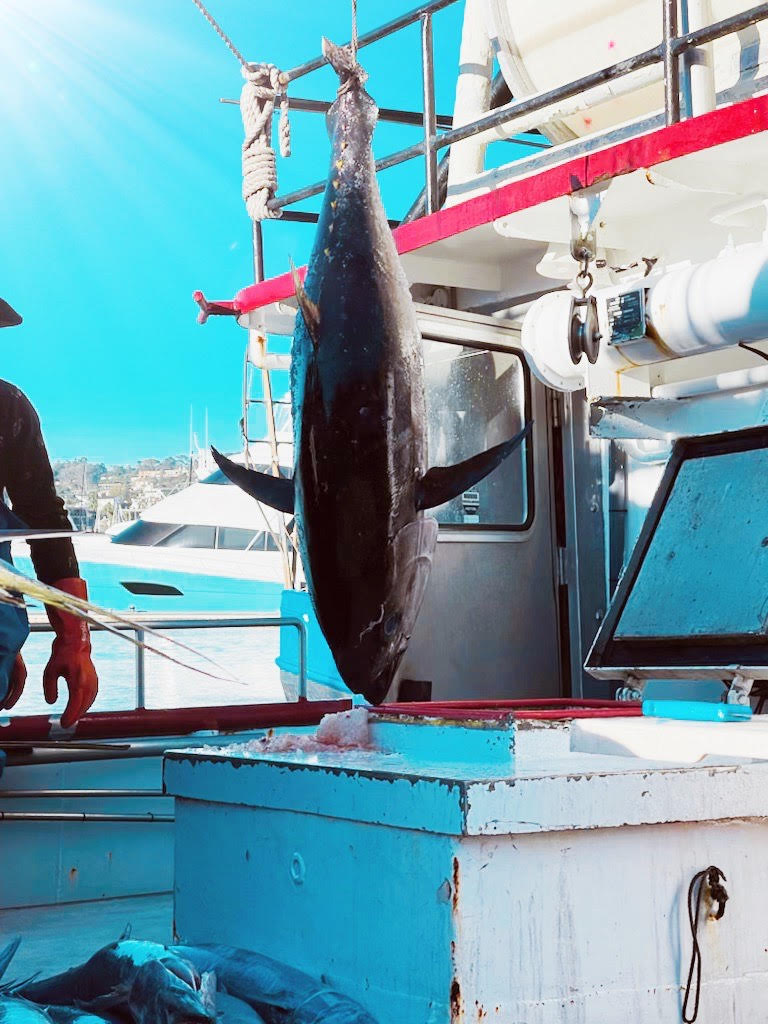
“Anthony’s out here every day buying fresh fish,” says Tommy Gomes, local seafood expert and star of the Outdoor Channel’s show, Fishmonger. “There’s nobody else doing that.”
Because of his dedication to using local, sustainable fish, Pascale was able to take imported albacore off the menu and replace it with local-caught opah. In addition to opah, Pascale frequently buys monchong, another under-utilized but delicious local fish, in addition to more widely known catches like bluefin tuna.
“I think Anthony’s the most unrecognized chef in San Diego,” laughs Gomes. “It’s because he doesn’t have any tattoos.”
Although he might roll below the radar, Pascale’s dedication to local fish and high-quality product has earned him lots of success, including a celebration that most restaurants—especially in Coronado—will never see: a ten-year anniversary.
Although there was no formal celebration, in July Pascale sent out a message of thanks to his clients, staff and friends who have supported Saiko Sushi.
“I want to acknowledge the staff, past and present, who have contributed their hard work and dedication,” wrote Pascale in a social media post. “We have been blessed with awesome individuals … I want to make sure you know that I will appreciate all of you until the day I die.”
He also expressed gratitude to his customers, who indulge his “culinary whims” and enjoy his sometimes “out-of-the-box” offerings.

“Sushi chefs are always asked, ‘how do you keep the fish fresh?’ and the answer is, ‘you don’t.’ The customers do, by coming in and ordering, so we can move our product … you guys rock, and I am lucky to see your faces,” he wrote.
In addition, Saiko Sushi was recently recognized by Eater San Diego as one of 15 Essential Sushi Bars in San Diego, heralding its “unparalleled sake program” and “a menu based on whole, locally-sourced fish and house-made ingredients.”
The success is hard-won after suffering, like many other small businesses, through COVID-induced lockdowns and regulations. Fortunately for Pascale, his strong background in finance—he once worked as a junior currency trader for a Japanese Bank at the World Trade Center—helped him out, big-time.
Although he says he was able to take advantage of the first COVID relief fund, it wasn’t enough. Pascale had to buy fish to make sushi, but the fish were big, and he wasn’t moving them fast enough. So, he set up a fish market at the restaurant, allowing customers to buy seafood for the price he bought it at the docks.
“Our business shrank ten-fold, but we were able to stay afloat,” says Pascale.
It was just Pascale, his wife Mami, and their ten-year-old daughter Makayla. They worked at the restaurant non-stop from sunrise to well after sunset, eating sushi for breakfast, lunch and dinner.

“I was the dishwasher, I was the accountant, I was chef, I was the bookkeeper, I was the server. Having a grasp of all the moving parts, I could do it. But there are still things I can’t do, like the POS system,” he laughs. “Makayla does that.”
And it was Pascale’s wife, Mami, who was responsible for one of his favorite lockdown memories, about a week-and-a-half into the shutdown. Mami went next door to Rosemary Trattoria and made a deal with their chef, trading sushi for an Italian dinner.
“That night we ate pizza and lasagna, and it was a total bonding moment for our family,” says Pascale. “We were so happy not to be eating sushi.”
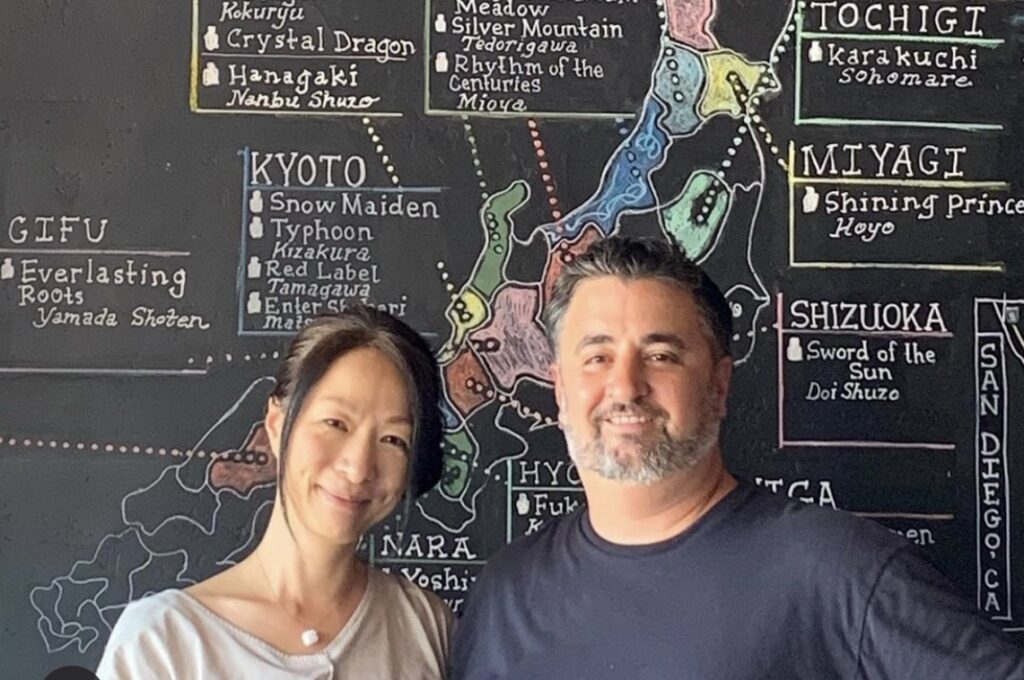
Today, Pascale still isn’t ready to say Saiko Sushi has survived COVID.
“Is it over? Is it not over? I don’t know. But we’re still here today,” he laughs.
One of the biggest lingering problems is staffing, according to Pascale; it’s a massive struggle. These days, some servers are adamant about not working on weekends.
In addition, produce costs have skyrocketed and availability has diminished. Many of the dry goods have been impacted due to supply chain issues. Pascale has plenty of little containers, and they have little lids, but nothing fits.
“Try to get a kid’s cup, it’s impossible,” he says with a laugh. “That’s a thing now.”
Even some food items like soy sauce are running dry. Pascale says vendors will call and warn him of upcoming shortages so he can stock up.
One thing that’s not running scare? Fresh local fish, available for purchase at San Diego docks. (Any member of the public can buy right off the boats, just follow Tommy Gomes or Atlantic Pacific Tuna on Facebook to keep track of what’s for sale.) Not only is local fish the cornerstone of Saiko Sushi’s menu–Pascale buys almost no fish from other regions, except for salmon, which is “impossible” to get now in San Diego–but the fishing docks are where he draws much of his culinary inspiration.
“I see how hard the fishermen work, and I see them get really excited about the fish they are catching … it’s contagious,” he says.
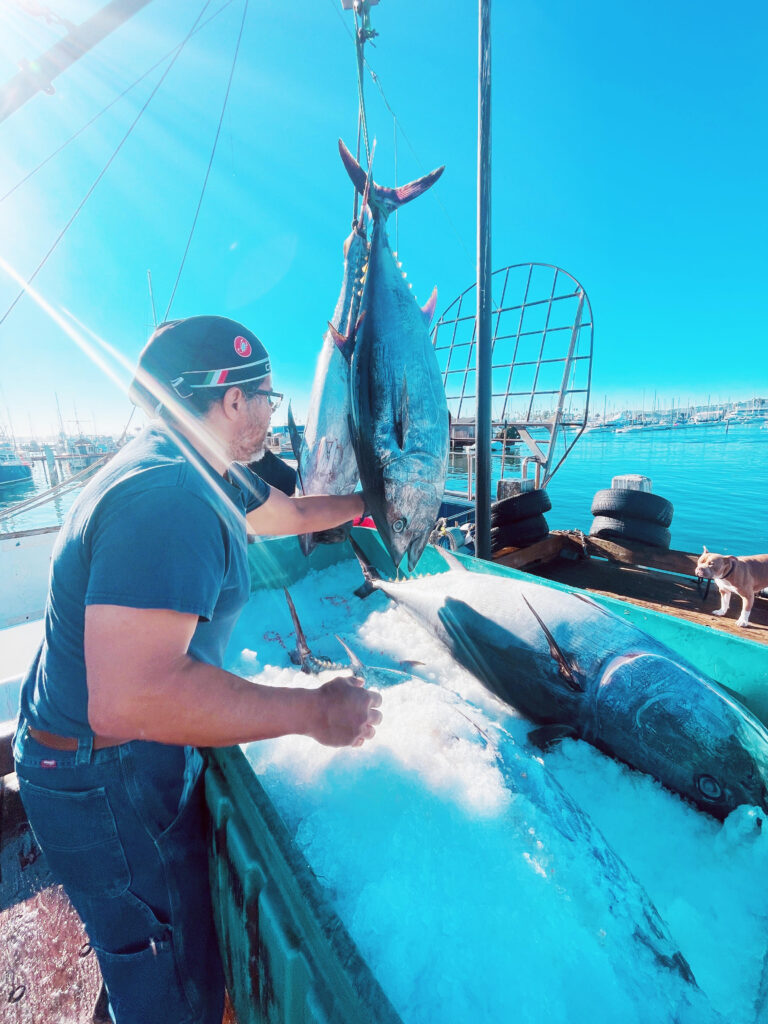
Although the American public has been trained to eat salmon, swordfish, tuna, and “something called seabass, which usually isn’t seabass at all,” Gomes says consumers are starting to become more educated and enjoy amazing, under-utilized local offerings like opah and monchong. The best part? It tastes much better than the flown-in, foreign-caught frozen fish that’s treated with sodium triphosphate to preserve color and appearance.

“You wouldn’t order chicken from China,” says Gomes. “So why eat fish from Southeast Asia when we have so much right here?”
Pascale says he prefers to buy his fish whole and disassemble it himself. Sadly, this isn’t common: most restaurants buy the frozen, pre-portioned stuff from large seafood conglomerates, according to Gomes.
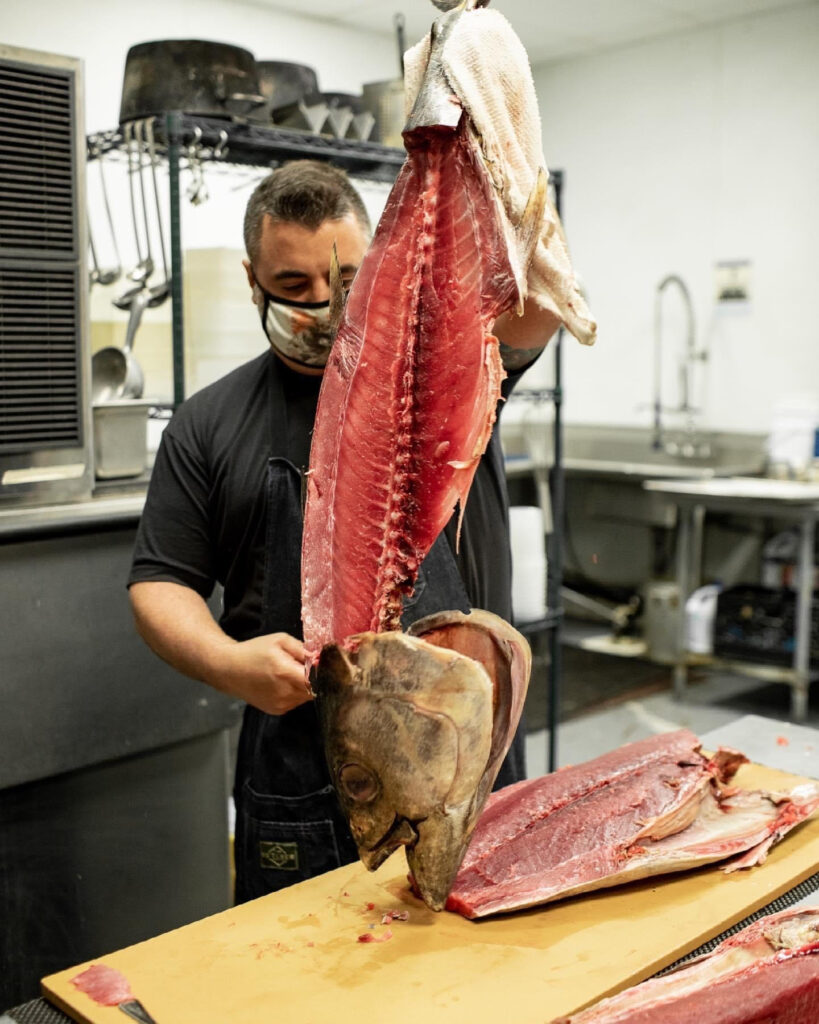
Although it’s a lot more work, Pascale is getting the last laugh.
“To those that doubted us, and told me we would fail…it’s been ten years and we’re still going.”
